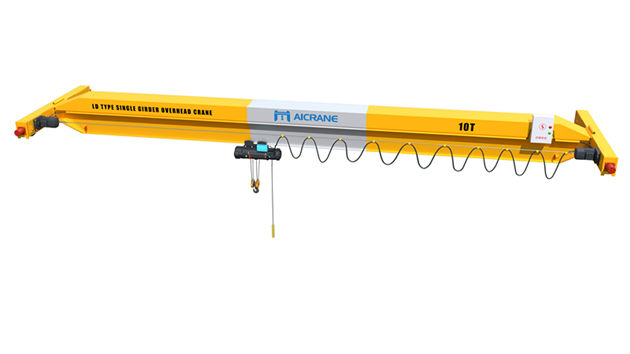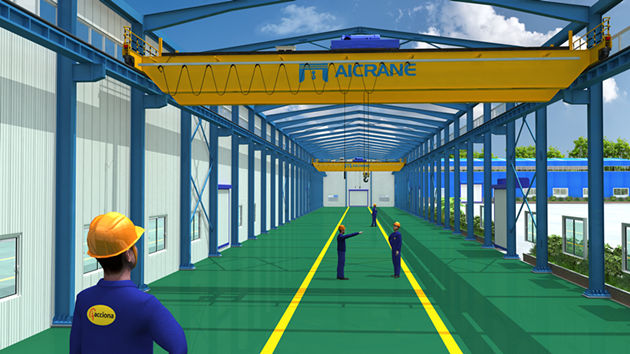One of the biggest decisions you have to make when buying an overhead crane is whether to go with a single-girder or double-girder design. Both options have pros and cons. The more clearly you understand their unique advantages, the easier it will be to decide on an option for your business.
The first thing that you need to understand is exactly what role the girder or girders play on an overhead crane. The girder makes up the body of the crane. With bridge cranes, it is mounted between two runways on opposite walls of a building.
On the girder itself, a hoist and trolley can move back and forth from one side of the building to the other. The entire girder can move along the runways from the front to the back of the building. The combined motion of the girder on the runways and the trolley on the girder make it possible to position the hoist over just about any area of the building’s floor.

With gantry cranes, the girder is mounted between two self-supporting legs that are attached to wheels. The basic concept is still the same, however. A trolley moves along the length of a girder, carrying a hoist along with it. This enables the hoist to easily be positioned above the item that needs to be lifted off of the ground.
With a single-girder crane, there is only one girder. With double-girder cranes, on the other hand, two girders run parallel to one another.
On single-girder cranes, the trolley typically hangs down from the bottom of the girder. On a double-girder crane, on the other hand, the trolley is mounted between the two girders, traveling back and forth along both of them. This difference is important when it comes to headroom.

Since the trolley on single-girder cranes hangs down from the girder, it extends lower into the building. With double-girder cranes, on the other hand, the trolley is quite a bit higher since it is mounted between the girders. This provides a lot more overhead clearance, making double-girder cranes a good option for places with low ceilings.
The strength of single-girder and double-girder cranes is often comparable, depending on how they are designed. Most cranes that are designed to lift extremely heavy loads, however, feature a double-girder design. Spreading the weight of the load across multiple girders helps reduce strain on the crane, making problems a lot less likely to occur when lifting a significant amount of weight. To get a quality 10 ton overhead crane, you just need to click here https://ellsenoverheadcrane.com/10-ton-overhead-crane/ and make a right choice as you need.
Deciding between a 10-ton single-girder or double-girder crane depends a lot on your situation. If you have a building with low ceilings, going with a double-girder design might be the best option since they usually offer a lot more headroom.
If you want to keep things simple, however, a single-girder crane could also work. If you are still on the fence about which style is best, talking directly to a manufacturer may be the best way to get the answers that you need. That way, you can make a well-informed decision.